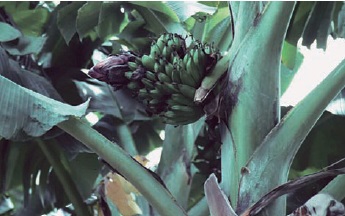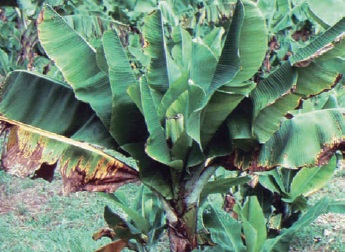Abnormal bunches
2,4-D damage (distorted bunches)
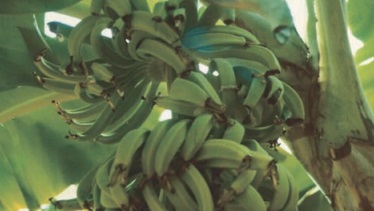
Cause: Spray drift onto the plant from nearby herbicide application.
Solution: Plants may grow out of the problem if they are growing vigorously. Severely affected plants will die, but the following suckers may grow out of the problem. Always be extremely careful with chemical applications.
Bunchy top (poor or no emergence)
Biosecurity Alert
Cause: The banana bunch top virus (BBTV) which is spread on infected planting material and by the banana aphid, Pentalonia nigronervosa. BBTV is not present in tropical Australia, and movement of planting material is controlled by legislation.
Solution: There is no cure for this disease and all infected plants must be eradicated. Outbreaks must be reported to your state primary industry authority.
More info:
Better Bananas
Australian Banana Growers’ Council
Queensland Department of Primary Industries
New South Wales Department of Primary Industries and Regional Development
Plant Health Australia
Choke throat (poor bunch emergence)
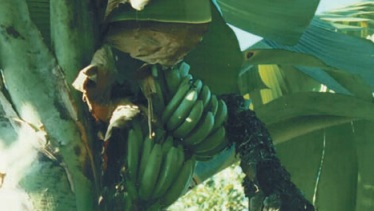
Cause: Stresses (water-logging, cold, water or nutrient shortage, 2,4-D damage, banana streak virus and bunchy top) that limit the normal elongation of the true stem and extrusion of the emerging bunch. Some varieties are tissue-cultured off-types and more sensitive.
Solution: Choose varieties less prone to choke throat and cull tissue-cultured off-types showing these symptoms. Improve management to limit stresses suffered by the plant. Always be extremely careful with chemical applications.
Stress before bunch emergence (distorted bunches)
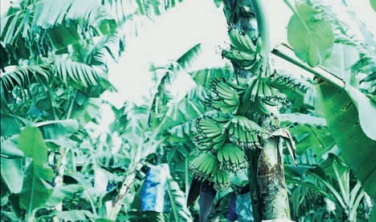
Cause: Bunches initiated during extremely hot weather show twisting of the tail of the bunch, which is caused well before the bunch has emerged. Flooding can also lead to abnormal bunch development.
Solution: If possible, avoid production in flood-prone areas.
Tissue-cultured off-type (bracts retained)
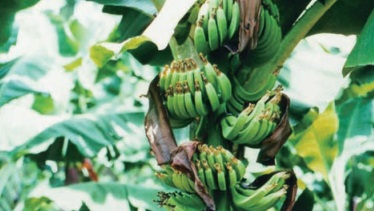
Cause: Bract retention is a genetic trait and is usually associated with dwarfness. It is most commonly noticed in dwarf off-types in tissue-cultured plantings.
Solution: Remove the bracts by hand at bagging. Cull dwarf off-types and set additional following suckers on nearby plants.
Wind damage (poor bunch emergence)
